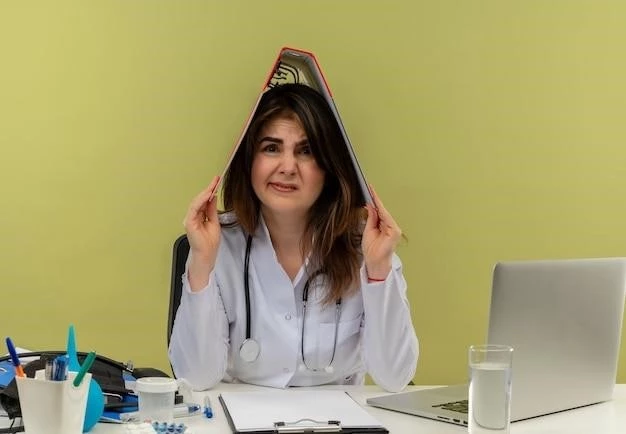Article Plan⁚ Everything You Need to Know About Pradaxa
Pradaxa Uses and Benefits
Pradaxa Side Effects Overview
Pradaxa Dosage and Administration Guide
Pradaxa Drug Interactions to be Aware of
Pradaxa vs. Traditional Blood Thinners⁚ A Comparison
Managing Pradaxa Side Effects⁚ Tips and Suggestions
Pradaxa Uses and Benefits
Overview of Pradaxa⁚ Pradaxa is commonly used to prevent blood clots in people with atrial fibrillation and treat deep vein thrombosis.
Common Medical Conditions Treated with Pradaxa⁚ Atrial fibrillation, deep vein thrombosis, and pulmonary embolism are among the conditions Pradaxa is prescribed for.
Benefits of Using Pradaxa Over Other Blood Thinners⁚ Pradaxa offers the advantage of not requiring frequent blood tests like other blood thinners, making it a convenient choice for many patients.
Overview of Pradaxa
Pradaxa, also known as dabigatran, is an anticoagulant medication used to prevent stroke and blood clots. It works by inhibiting the clotting enzyme thrombin. Pradaxa is available in capsule form and is typically taken orally. It is important to follow your doctor’s instructions carefully when using Pradaxa to ensure its effectiveness and minimize the risk of side effects. Always inform your healthcare provider about any other medications you are taking to avoid potential drug interactions.
Common Medical Conditions Treated with Pradaxa
Pradaxa is commonly prescribed for medical conditions such as atrial fibrillation, deep vein thrombosis (DVT), and pulmonary embolism. These conditions require effective blood clot prevention, and Pradaxa is known for its ability to reduce the risk of clot-related complications. It is crucial to take Pradaxa as prescribed by your healthcare provider to ensure its therapeutic benefits and manage potential side effects. Always consult your doctor before making any changes to your medication regimen.
Benefits of Using Pradaxa Over Other Blood Thinners
Pradaxa offers several advantages compared to traditional blood thinners, including not requiring frequent blood monitoring tests, having fewer food and drug interactions, and offering a more predictable anticoagulant effect. This convenience can lead to improved adherence to the medication regimen and reduced inconvenience for patients. However, it is essential to follow your doctor’s instructions closely and report any unusual symptoms promptly.

Pradaxa Side Effects Overview
Common Side Effects of Pradaxa⁚ Pradaxa may cause gastrointestinal symptoms like indigestion and stomach pain, as well as minor bleeding.
Serious Side Effects to Watch Out For⁚ Severe bleeding, signs of an allergic reaction, or unusual bruising should prompt immediate medical attention.
When to Seek Medical Help for Side Effects⁚ If you experience persistent or concerning side effects while taking Pradaxa, consult your healthcare provider promptly to discuss the next steps and potential treatment options.
Common Side Effects of Pradaxa
Common side effects of Pradaxa may include gastrointestinal discomfort such as upset stomach or diarrhea, as well as minor bleeding like nosebleeds or bruising. These side effects are usually mild and temporary. However, it is important to monitor any symptoms closely and report them to your healthcare provider if they persist or worsen. Remember to follow your doctor’s guidance on managing these side effects effectively.
Serious Side Effects to Watch Out For
Some serious side effects of Pradaxa that require immediate medical attention include severe bleeding that does not stop, symptoms of a stroke or heart attack, allergic reactions with difficulty breathing, swelling, or hives, and signs of liver problems like yellowing of the skin or eyes. If you experience any of these symptoms, seek urgent medical assistance and inform your healthcare provider about your Pradaxa usage.
When to Seek Medical Help for Side Effects
If you experience persistent or severe side effects while taking Pradaxa, such as uncontrolled bleeding, chest pain, difficulty breathing, or allergic reactions, it is crucial to seek immediate medical attention. Do not ignore any concerning symptoms, and contact your healthcare provider or go to the nearest emergency room for prompt evaluation and appropriate management. Your health and safety should always be a top priority when dealing with medication side effects.
Pradaxa Dosage and Administration Guide
Recommended Dosage of Pradaxa⁚ The typical dose of Pradaxa for preventing stroke in atrial fibrillation is 150 mg twice daily. For treatment of deep vein thrombosis and pulmonary embolism, the dose may vary.
How to Take Pradaxa Effectively⁚ Pradaxa is usually taken with a full glass of water and can be with or without food. It is essential to adhere to the prescribed dosage schedule to maintain consistent blood levels of the medication.
What to Do If a Dose is Missed⁚ If you miss a dose of Pradaxa, take it as soon as you remember, unless it is close to the time of your next dose. Do not double doses to make up for missed ones. Contact your healthcare provider if you have concerns about missed doses.
Recommended Dosage of Pradaxa
The recommended dosage of Pradaxa for most patients is 150 mg taken orally twice daily. However, the dosage may vary based on individual factors such as age, weight, and specific medical conditions. It is crucial to follow your healthcare provider’s prescription instructions precisely to ensure the optimal therapeutic effect while minimizing the risk of side effects and complications. If you have any questions or concerns about your Pradaxa dosage, consult your doctor for guidance.
How to Take Pradaxa Effectively
To take Pradaxa effectively, swallow the prescribed dosage with a full glass of water. Pradaxa can be taken with or without food, but it is important to maintain regular dosing intervals. Consistency in taking Pradaxa is key to ensuring its efficacy in preventing blood clots and managing your medical condition. If you have any difficulty swallowing the medication or concerns about its administration, consult your healthcare provider for guidance and support.
What to Do If a Dose is Missed
If you miss a dose of Pradaxa, take it as soon as you remember unless it is almost time for your next scheduled dose. Do not double up on doses to compensate for a missed one. Follow your regular dosing schedule and contact your healthcare provider if you have concerns about missed doses or need further guidance on managing your medication regimen effectively.
Pradaxa Drug Interactions to be Aware of
Common Drugs that Interact with Pradaxa⁚ Some medications that may interact with Pradaxa include antiplatelet drugs, NSAIDs, certain antibiotics, and antifungal medications. Always inform your healthcare provider about all the medications, supplements, and over-the-counter drugs you are taking to prevent potential interactions.
Potential Consequences of Drug Interactions⁚ Drug interactions with Pradaxa can affect its effectiveness or increase the risk of side effects such as bleeding. Monitoring for interactions and adjusting medication doses as needed are essential to ensure safe and successful treatment.
Consulting Your Doctor Before Taking Other Medications⁚ Before starting any new medication or supplement while on Pradaxa, consult your doctor to assess the risk of drug interactions and determine the best course of action to manage your health condition effectively.
Common Drugs that Interact with Pradaxa
Various medications can interact with Pradaxa, including antiplatelet drugs like aspirin, NSAIDs such as ibuprofen, certain antibiotics like clarithromycin, and antifungal medications such as ketoconazole. These interactions can affect Pradaxa’s effectiveness or increase the risk of side effects. It is crucial to inform your healthcare provider about all the medications you are taking to prevent potential interactions and ensure safe treatment.
Potential Consequences of Drug Interactions
Drug interactions with Pradaxa can lead to decreased effectiveness of the medication or an increased risk of side effects such as bleeding disorders. It is essential to be aware of potential interactions, monitor for any adverse effects, and promptly report any unusual symptoms to your healthcare provider. Adjusting medication doses or considering alternative treatments may be necessary to ensure your safety and well-being while taking Pradaxa.
Consulting Your Doctor Before Taking Other Medications
Before adding any new medication to your regimen while taking Pradaxa, consult your doctor to discuss potential drug interactions. Your healthcare provider can assess the risks, adjust dosages if necessary, or recommend alternative treatments to maintain the efficacy and safety of your medication plan. It is crucial to prioritize open communication with your healthcare team to ensure coordinated and effective healthcare management.
Pradaxa vs. Traditional Blood Thinners⁚ A Comparison
When comparing Pradaxa to traditional blood thinners like warfarin, Pradaxa is often preferred for its convenience in dosing (no need for frequent monitoring), lower risk of interactions with food and other drugs, and a more predictable anticoagulant effect. However, individual patient factors and medical history should be considered when determining the most suitable blood-thinning option. Consult your healthcare provider to discuss which option aligns best with your specific needs and health goals.
Differences Between Pradaxa and Traditional Blood Thinners
Pradaxa differs from traditional blood thinners like warfarin in its dosing regimen and monitoring requirements. Pradaxa offers the advantage of fixed dosing without the need for regular blood tests, while warfarin requires frequent monitoring. Additionally, Pradaxa has fewer food and drug interactions compared to warfarin. Understanding these distinctions can help you make an informed decision with your healthcare provider regarding the most suitable blood-thinning medication for your condition.
Effectiveness and Safety Comparison
Pradaxa and traditional blood thinners are both effective in preventing blood clots, but Pradaxa may offer a lower risk of intracranial bleeding. However, traditional blood thinners like warfarin have antidotes available to reverse their effects in emergencies, whereas Pradaxa does not have a specific antidote. Understanding these differences in safety profiles is crucial in choosing the most appropriate blood-thinning medication based on your individual health needs. Consult your healthcare provider for personalized advice.
Which Patients Benefit Most from Pradaxa
Patients who prefer a blood thinner with fixed dosing, minimal dietary restrictions, and fewer drug interactions may benefit most from Pradaxa. Those seeking a convenient anticoagulant option without the need for frequent monitoring or dietary adjustments often find Pradaxa to be a suitable choice. However, individual health considerations and consultation with a healthcare provider are essential in determining if Pradaxa is the right medication for you. Collaboration with your doctor can help tailor the treatment to meet your specific needs and enhance its effectiveness.
Managing Pradaxa Side Effects⁚ Tips and Suggestions
Lifestyle Changes to Reduce Side Effects⁚ Maintaining a healthy diet, staying hydrated, and avoiding excessive alcohol consumption can help minimize gastrointestinal side effects of Pradaxa. Regular exercise and stress management techniques may also support overall well-being while on this medication.
When to Contact Your Healthcare Provider⁚ Be proactive in reporting any unusual symptoms or side effects you experience while taking Pradaxa. If you notice prolonged bleeding, signs of an allergic reaction, or any other concerning changes, seek medical advice promptly.
Coping Strategies for Common Side Effects⁚ Engage in open communication with your healthcare team to address any side effects effectively. They can offer guidance on symptom management, dosage adjustments, or alternative treatment options to optimize your experience with Pradaxa.
Lifestyle Changes to Reduce Side Effects
Simple lifestyle modifications can help alleviate Pradaxa side effects. Drinking plenty of water, eating a balanced diet rich in fiber, and avoiding alcohol can lessen gastrointestinal discomfort. Regular physical activity and stress management techniques like meditation or yoga can also contribute to overall well-being and minimize side effects. Incorporating these habits into your daily routine may enhance your Pradaxa experience. Consult your healthcare provider for personalized recommendations.
Coping Strategies for Common Side Effects
For managing common Pradaxa side effects, consider tactics such as taking the medication with food to reduce stomach irritation and ensuring adequate hydration. Over-the-counter remedies like antacids may help ease gastrointestinal symptoms. If minor bleeding occurs, apply pressure to the area. Communicate with your healthcare provider for further guidance on coping strategies tailored to your specific side effects and needs.
